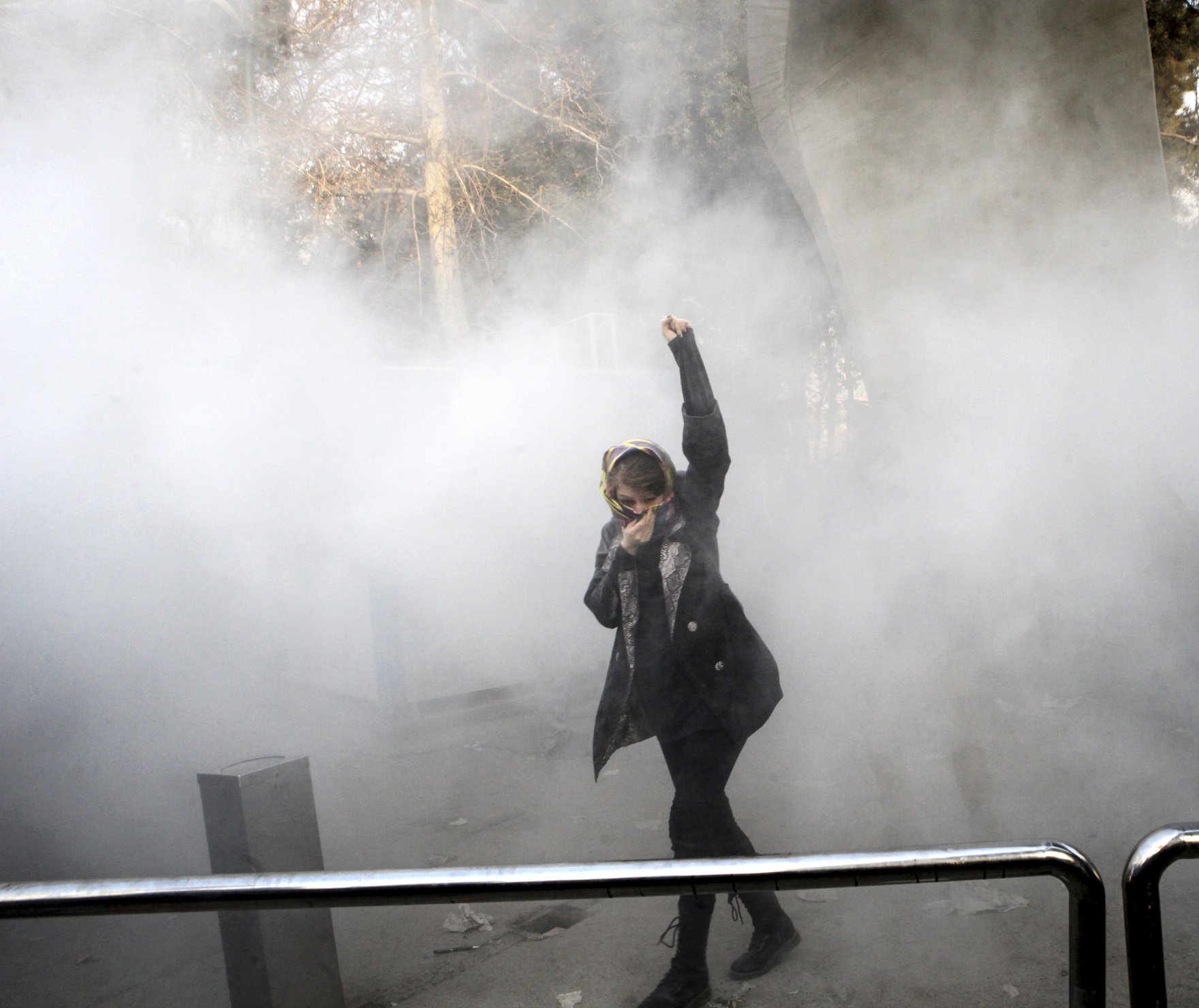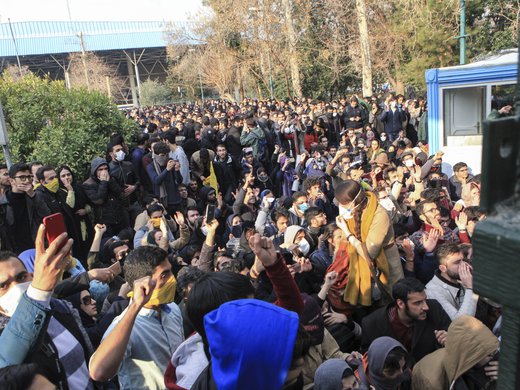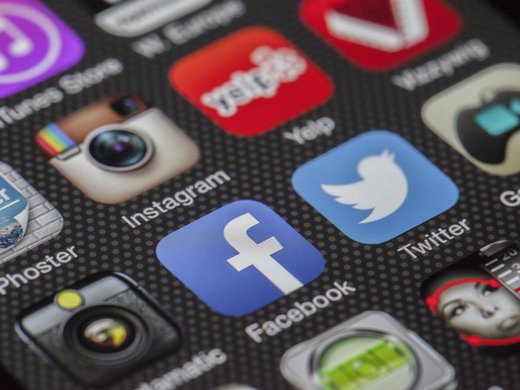After thousands of protesters took to the streets in cities across Iran in late December and the first week of January, the government responded by shutting down access to some of the country’s most popular social media sites. The blackout affected Telegram and Instagram, and there were reports of internet slowdowns in parts of the country.
Partial or total internet blocking is becoming a regrettably common government response to protests or political upheaval, but the tactics used and the extent of the shutdowns vary. Here’s what the recent crackdown in Iran can tell us about the regime’s approach to internet censorship and what comes next.
Why Is Telegram an Important Target?
Tens of thousands of websites are censored in Iran, according to a 2017 report from the watchdog Freedom House. That includes the websites of foreign news outlets, human rights organizations, political opposition groups and other not aligned with the theocratic regime. It also includes popular social networks such as Facebook, Twitter and YouTube and the blogging platforms WordPress and Blogger. With few other legal options, the mobile messaging application Telegram has surged in popularity, with an estimated 40 million monthly users in a country of nearly 80 million people.
Telegram works as an instant messaging app but it also hosts “channels,” where content is broadcast to subscribers — making it a source for sharing news as well as personal messaging. As its popularity soared, Iran’s leaders introduced new restrictions on the service. Any channel with more than 5,000 subscribers was told to register with the government and give administrative privileges to a government bot that would monitor the account. Activists have also raised concern about censorship after insulting memes and images called “stickers” — which aren’t illegal under Telegram’s terms of service — were removed at government request, Iranian internet researcher Mahsa Alimardani wrote in Politico.
On December 30, after a complaint from Iran’s government, Telegram removed a channel that was encouraging protesters to use violent tactics (promotion of violence is barred under Telegram’s terms of service). Even so, Telegram was blocked the next day.
The government also shut off access to Instagram, which has a live video feature that was used extensively by moderate President Hassan Rouhani’s re-election campaign team in the 2017 race. And there have been multiple reports that mobile data and foreign websites were difficult to access, which could be an indication that traffic is being blocked or throttled.
Why Did the Regime Choose This Approach?
Blocking an app like Telegram is not completely effective: Iranians are used to internet restrictions and often use virtual private networks (VPNs) to access blocked websites and apps. But governments that block social platforms during protests are aware of this and often have other reasons for doing so. For instance, after Turkey blocked Twitter in 2014, Twitter usage in the country actually increased. But the people who used VPNs and other workarounds in defiance of government orders were more likely to be tech-savvy government opponents. Instead, the ban — and Turkish President Recep Tayyip Erdogan’s description of Twitter as a “menace” — was thought to target party supporters, or those less comfortable with technology, to scare them away from unfiltered coverage that could lead them to reconsider the government line.
Likewise, the Iranian government could be gambling that banning Telegram and Instagram won’t deter everyone from using the service, but will throw up enough of a barrier to keep less savvy or more cautious users offline.
At the same time, it sends a message to Telegram — and any other tech company that might hope to enter Iran — that the regime has no qualms about shutting them out if they don’t play ball. The Facebook-owned WhatsApp (a free, cross-platform instant messaging application) could find itself in this position because its messages are automatically encrypted, which blocks them from government view.
Meanwhile, slowing or cutting off mobile data networks hinders protesters trying to organize on the move. And making it difficult to access foreign websites serves two purposes. First, it is part of a pattern of trying to keep Iranians confined to a domestic web environment — the so-called “halal internet” — which excludes any content the regime objects to, while making it easier to monitor users. Second, it makes it onerous to upload images of the protests to show the outside world what is happening in Iran. Over the weekend there were conflicting reports about whether the protests had petered out or were continuing, and a severe drop-off in social media footage from Iran only confused the matter.
What Happens Next?
Iran’s minister in charge of information and communications technology, Mohammad-Javad Azari Jahromi, has said that the Telegram shutdown is a temporary measure. But he also warned on Wednesday that if Telegram does not block anti-regime channels, it risks being permanently banned.
It’s a common dilemma for social media companies operating in foreign countries: restrict some content to maintain access to the country’s market, or stay true to their anti-censorship principles and risk getting thrown out altogether. Most social giants choose the former: for instance, after the Turkey crackdown, Twitter began withholding certain tweets or accounts from being viewed in countries where they were illegal. But Telegram CEO Pavel Durov has vowed not to compromise: “We consider freedom of speech an undeniable human right, and would rather get blocked in a country by its authorities than limit peaceful expression of alternative opinions,” he wrote in a Telegram post.
In a country where half the population uses the app in their day-to-day life, Durov’s decision could have a huge impact: even if some people keep using Telegram via VPNs, many others won’t, and with a reduced audience, the platform could become less effective and attractive for sharing content and messages. If it’s not banned, but Telegram agrees to cooperate with the government, users will likely leave the platform anyway if they can no longer post or view unfiltered content. And if users do decide to stay, they’ll likely self-censor to avoid government scrutiny.
The protests have also sparked renewed calls from hardliners in Iran for the country to speed up the development of domestic social platforms and websites that can replace foreign players like Telegram. But attempts to build domestic social networks have not seen much success. Last year the owners of Cloob, an Iranian alternative to Facebook, shut down their site, citing an inability to keep up with the strict government restrictions. The site also struggled to attract and retain users and developers due to fears of government surveillance. Cloob’s experience shows that Iran can build its own social media, but there’s no guarantee an audience will follow as long as more popular foreign sites are available — even if they can only be accessed clandestinely.
There’s much work to be done on the streets of Iran — and also an ocean away in Silicon Valley, where tech giants face a growing need to ensure people can use their platforms safely in repressive states.



